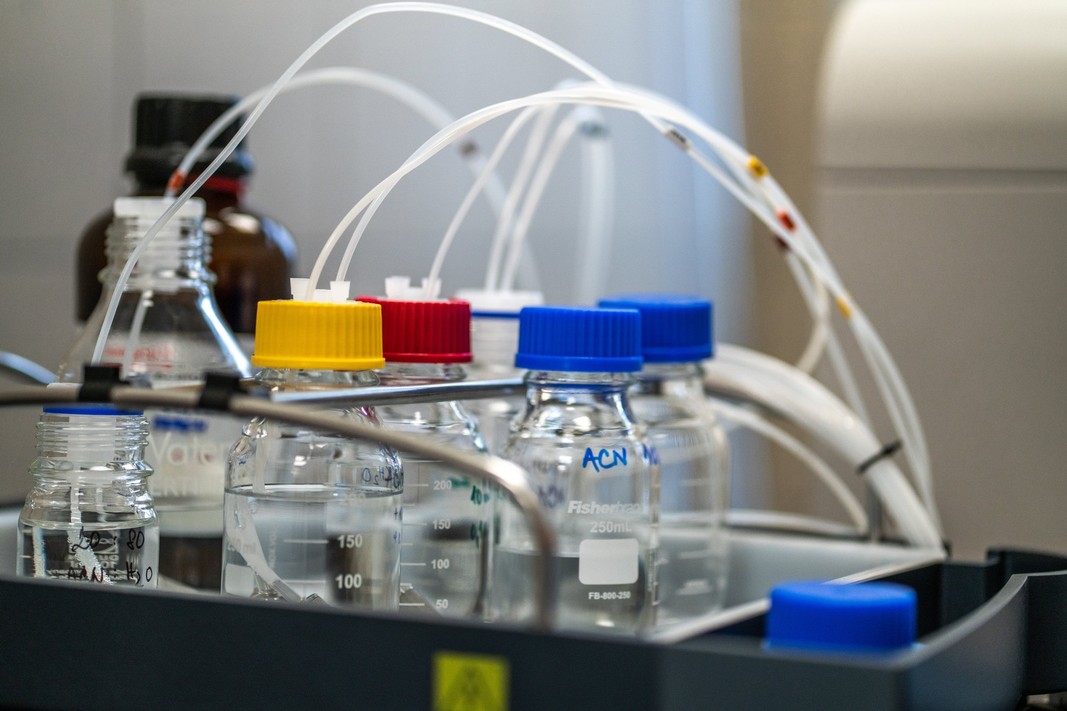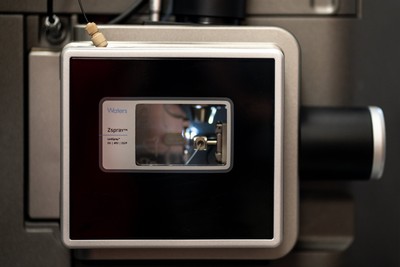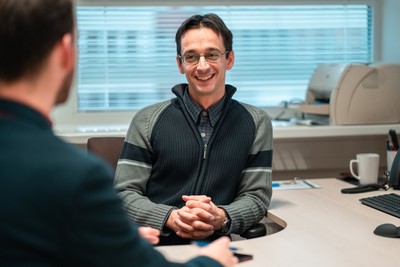Scientists started working on the biggest project in the history of the University of Hradec Králové. The IT4N team of experts also included students

Neurodegenerative diseases cause irreversible changes to neurons. Neurons are the primary components of the nervous system and they directly affect the functions of the brain and the spinal cord. The most common neurodegenerative diseases include Alzheimer's disease and Parkinson's disease, and related disorders. In the context of this issue, a team made up of the representatives of three East Bohemian institutions, the University of Hradec Králové included, took up the first-rate IT4Neuro(degeneration) pre-application research project.
IT4N is a four year project run under the Operational Programme Research, Development and Education and it is extensively financed by the European Union. Total costs amount to 79 million CZK.
Dozens of researchers have been working since March 2019 on medical applications and the proposal and testing of new substances in the preclinical development of new drugs.
Where neurodegeneration is concerned, socio-economic analyses constitute a crucial element of the project, particularly in relation to the practical impacts of the introduction of new medicines and new diagnostic procedures using high-performance information and communication technologies (ICT) for the assessment of modern imaging techniques.
The team of scientists is lead by doc. Ing. Miroslav Lísa, Ph.D. (Faculty of Science).
Associate professor Lísa, could you briefly explain what is the aim of the IT4N project?
We have to divide the project into three basic parts. Put simply, a chemical part, a socioeconomic part and a clinical application part. In the first, chemical part of the project, we propose and prepare substances that in the future could help treat neurodegenerative diseases. The second part of the project focuses on the impact these diseases and follow-up treatment have on society, particularly in the context of economic indicators, such as the impact on the government budget. The last part of the project concerns clinical applications, including computerised and computer-evaluated results from graphic medical techniques. The aim is to come up with a computer algorithm that will provide for a simpler and early detection of the disease(s).
Is the project proof of the fact that multidisciplinarity is more than welcome?
Absolutely. Scientific collaboration across disciplines today is a must. We endeavour to interconnect top experts across disciplines with a view of achieving the best project results. We are also aided and supported by others on our journey towards success. These include the UHK Faculty of Science and the Faculty of Informatics and Management, the University Hospital in Hradec Králové, and the University of Pardubice.
When we presented the IT4N project at a press conference last year, the newspapers eagerly commented on the rivalry between Pardubice and Hradec Králové, quote/unquote, “Rivals joined forces in their fight against insidious diseases.” To what extent is that true? Is the aim of the project to find a new drug?
That is, of course, a very severe abbreviation of what we are, in fact, working on. The aim of this four-year project is not to find a cure for Alzheimer’s disease as it is very unlikely anyone will be anywhere near doing so in the near future. Our objective is to advance our knowledge at least a little. And this does not only concern Alzheimer’s disease, but all neurodegenerative diseases in general.
The ideal result would be to discover or at least propose molecules that in the future could be potentially used to treat the diseases. But the result of the project cannot be a cure for neurodegenerative diseases; finding a cure is, unfortunately, in itself a very long process.
The project will end in 2022, so we have already gone a quarter of the way. So what have you already achieved and what stage are you at now? Naturally, much has already been done. Being nine months into the project, we have mainly managed to overcome the initial kick-start phase. It goes on to say that all of us are building on experience and that none of us is building on a green field. One of the big challenges that we had to deal with right from the start of the project were investments, involving substantial financial resources. This is particularly true of the equipment here at the Faculty of Science; we purchased a supercomputer and a mass spectrometer worth tens of millions of Czech korunas. Having said that, the first experiments are already running parallel to this phase.
 A supercomputer? Where is it and what does it do?
A supercomputer? Where is it and what does it do?
The supercomputer is central to the entire project. It inter-combines all of the fields involved in the research project. We squeezed our way into the supercomputer and we are now overseeing necessary construction adjustments and modifications to the building in which the Faculty of Science is located associated with the installation of the supercomputer. We have air-conditioning and energy supply issues, as the distribution network and associated cooling system are in this case very complicated. The supercomputer should be fully operational in April.
The mass spectrometer is an even bigger investment than the supercomputer. How will it be used?
The mass spectrometer is a very professional piece of equipment that will help us analyse substances that we plan to present as potential cures. It may be said that it will confirm if the structure of the substance that we are working on is correct, whether, for example, it is as pure as it should be. The spectrometer will also help analyse metabolites which may be linked to neurodegenerative diseases. Metabolites are substances in the body that are transformed thanks to biochemical processes and when a disease sets in, their concentrations may vary.
We analyse biological tissues and try to determine which substances are actually present in them and how their concentration may vary when a person is healthy and when they are ill. Put simply, a mass spectrometer allows us to transfer these substances to charged ions and then determine their mass.
Once we know their mass, we can determine what type of substance we are dealing with, its molecular weight and its structure. But what’s most important is that we can then determine its representation in a sample and then compare these samples.
Did our students also participate in the research project?
Absolutely. In fact, one of the objectives was to also involve students in the research. Thanks to the project, the Faculty of Science even opened new positions for promising Ph.D. students. Apart from that, students enrolled in bachelor degree programmes are also involved in the project; they have made it a part of their thesis.
What kind of experience is it for a student to be part of such a project, especially during their bachelor degree studies?
Invaluable. Truly. I think that the main advantage is that they can use state of the art instruments and equipment during their study years, which they would normally not be able to do. Another indisputable advantage is that they learn to work within a team and that they can be part of a project in process. And then, of course, the project topic. Neurodegenerative disorders are and will, unfortunately, for some time to come, continue to be a big topic and it is meaningful and motivating to participate in this type of research because you get to work on something specific and beneficial.
Apart from working with the best, does the project also lend itself to commercial cooperation?
Actually, yes. It gives me great pleasure to acknowledge that we have already entered into one such agreement. We contracted the company that supplied the mass spectrometer to us and we agreed that it would continue to support our future research activities. And in so doing we have also met the last milestone of the entire project. Proliferating cooperation with the world of commerce and introducing research results into practice. I view our partnership with Waters as being a forerunner in the cooperation between science and practice.
 doc. Ing. Miroslav Lísa, Ph.D.
doc. Ing. Miroslav Lísa, Ph.D.
(*1980)
- Obtained a Ph.D. diploma in analytical chemistry at the University of Pardubice and habilitated in the same field in 2019 at Palacký University in Olomouc
- Has been working at the University of Hradec Králové since 2017 (Department of Chemistry, Faculty of Science)
- H-index 25
- Over 50 articles, citation rate exceeds 1,500 according to WoS, 7 chapters in monographs and 200 conference papers
- Researcher, co-researcher or team member in more than 10 research projects
- In 2014, The Analytical Scientist placed him on the Power List (a list of 40 of the most influential scientists under the age of 40 in analytical chemistry) (Top 40 under 40 list)
- Spektroskopická společnost Jana Marka Marci awarded him the Vladimír Hanuš Prize in 2016 for best research work in mass spectrometry

